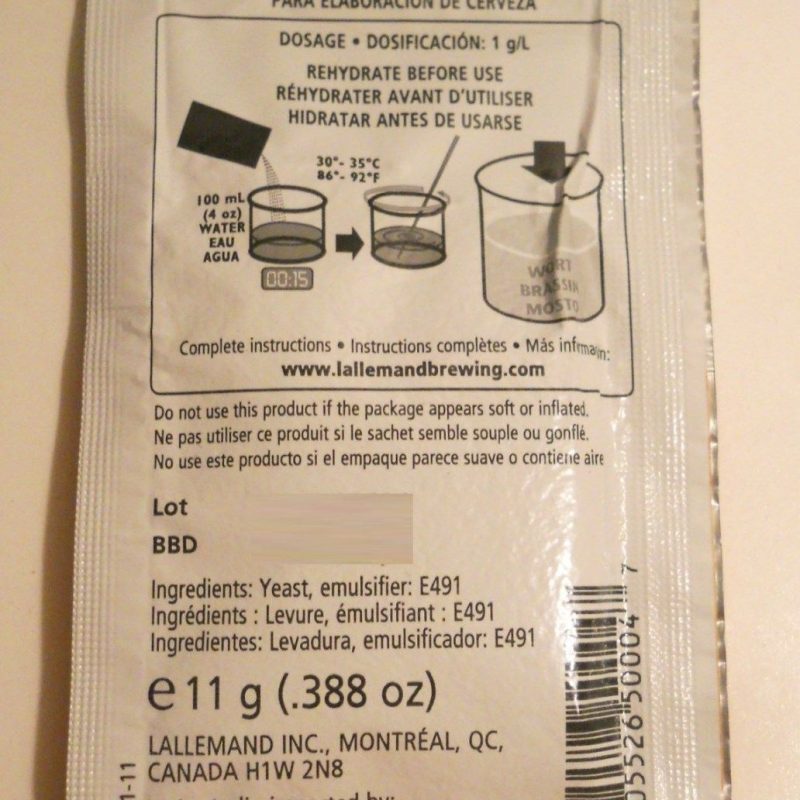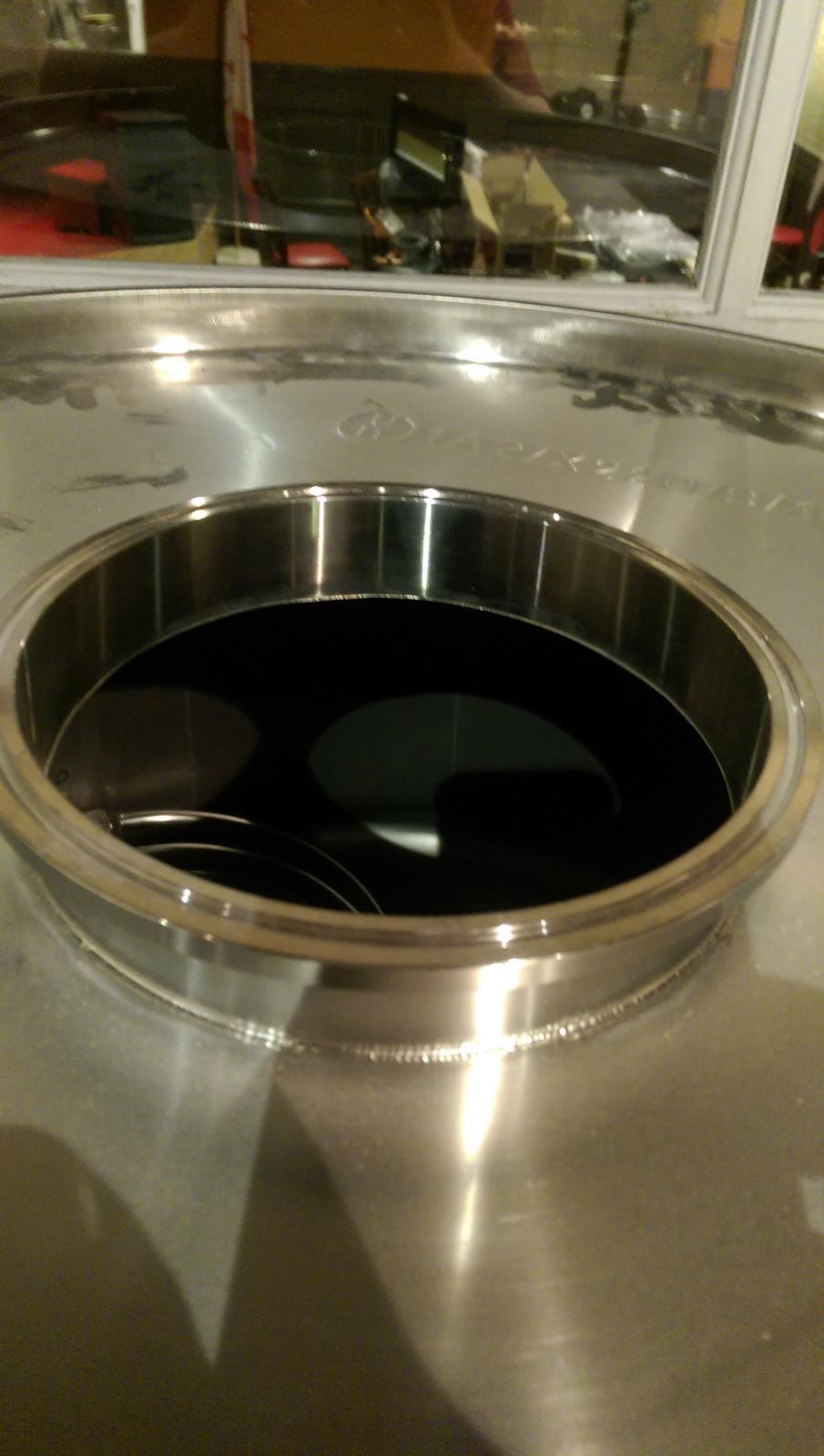I made a yeast starter with us-05 let is sit for a day then refrigerated for a day till I was ready for it ... I tossed the old dme out that was on top and washed with fresh wort cooled to 64 degree and pitched to my wort ..doesn't seem that anything is happening .. not sure if I screwed this up as my last batch bubbled right away after hydrating and pitching but no storage
You are using an out of date browser. It may not display this or other websites correctly.
You should upgrade or use an alternative browser.
You should upgrade or use an alternative browser.
Us-05
- Thread starter IPAPatty
- Start date

Help Support Homebrew Talk - Beer, Wine, Mead, & Cider Brewing Discussion Forum:
This site may earn a commission from merchant affiliate
links, including eBay, Amazon, and others.
jrgtr42
Well-Known Member
How long ago did you pitch? Sometimes it takes a while to get going.
What happened is the yeast sort of went to sleep as you refrigerated it.
Next time, for faster starting, refresh the wort (as you did) but give it time for the yeast to wake up. When you see krausen in the starter flask, then pitch, you know the yeast is awake and working. I've done this a couple times, and the way to do it is to make extra starter wort, keep some in sealed, sanitized container, and refresh using that the morning that you're brewing - or at least several hours before pitching. You can also use wort a bit warmer than normal pitching - up to low 70s I haven't seen any issues- to get things going a bit quicker.
What happened is the yeast sort of went to sleep as you refrigerated it.
Next time, for faster starting, refresh the wort (as you did) but give it time for the yeast to wake up. When you see krausen in the starter flask, then pitch, you know the yeast is awake and working. I've done this a couple times, and the way to do it is to make extra starter wort, keep some in sealed, sanitized container, and refresh using that the morning that you're brewing - or at least several hours before pitching. You can also use wort a bit warmer than normal pitching - up to low 70s I haven't seen any issues- to get things going a bit quicker.
Morrey
Well-Known Member
My last use of (rehydrated) US-05 took two days to show signs of fermentation at 67F. Then it took 6 more days to go from 1.050 to 1.008. Eight days total.
You shouldn't make a starter with dry yeast. The reason why it is recommended to rehydrate dry yeast and not pitch it right into the wort is because at first the cell walls can't block out the stuff that kills the cell like sugar. So when you pitch directly into the wort, some of the cells do die. When you rehydrate in water, there isn't anything bad to kill the cells. After rehydrating, the cell walls can now block out sugar and anything else that could kill the cells which makes it safe to pitch into wort. When you created a starter with dry yeast, you are essentially pitching the dry yeast directly into wort. Cells most likely died because of it.
You did mention that your last batch you rehydrated. When you originally said you made a starter, did you mean rehydrate or did you actually make a starter for this batch?
If you meant rehydrate instead of yeast starter, you did it right however you shouldn't store rehydrated yeast. The longer you keep rehydrate yeast, the more glycogen reserves they use up. If you rehydrate when you start your brew day and pitch right away, you will be ok. Anything longer than that may not be good. If you left it for 2 days, they probably used a lot of their glycogen reserves.
You did mention that your last batch you rehydrated. When you originally said you made a starter, did you mean rehydrate or did you actually make a starter for this batch?
If you meant rehydrate instead of yeast starter, you did it right however you shouldn't store rehydrated yeast. The longer you keep rehydrate yeast, the more glycogen reserves they use up. If you rehydrate when you start your brew day and pitch right away, you will be ok. Anything longer than that may not be good. If you left it for 2 days, they probably used a lot of their glycogen reserves.
You shouldn't make a starter with dry yeast.
THIS. Safale says you're supposed to sprinkle directly onto the wort.
Lallemand says to rehydrate.
Dry yeast is awesome, flavorless, and inexpensive. Buy two packs, and follow recommended directions. These yeast scientists know way more than us.
What's your batch size and your original gravity? If you were trying to save money by making a starter, harvest the yeast from this batch, and re-use it on the next batch. Most home brewers can easily wash/reuse yeast four or more times without a flavor-changing effect.
Also, forgive me if I'm incorrect, but I don't believe you're suppose to pitch US-05 at 67°. You are supposed to ferment at 67°. You should pitch closer to 75°.
THIS. Safale says you're supposed to sprinkle directly onto the wort.
Lallemand says to rehydrate.
This is from Safale's website, specifically the US-05 product page Specification Sheet:
REHYDRATION INSTRUCTIONS
:
Sprinkle the yeast in minimum 10 times its weight of sterile water or wort at 25 to 29°C (77°F to 84°F).
Leave to rest 15 to 30 minutes.
Gently stir for 30 minutes, and pitch the resultant cream into the fermentation vessel.
Alternatively, pitch the yeast directly in the fermentation vessel providing the temperature of the wort is above 20°C (68°F).
Progressively sprinkle the dry yeast into the wort ensuring the yeast covers all the surface of wort available in order to avoid clumps.
Leave for 30 minutes, then mix the wort using aeration or by wort addition.
I'm surprised they don't print the same instructions, or at least mention the FAQ for their yeast these days, as homebrewers are more adept and knowledgeable then they were 20 years ago.
This is from Safale's website, specifically the US-05 product page Specification Sheet:
(snip)
Odd. This is the back of the US-05 package:

Odd. This is the back of the US-05 package:
Not terribly odd when you consider the amount of space they have to print the instructions on that packet.
Not terribly odd when you consider the amount of space they have to print the instructions on that packet.
They could just include: for hydration instructions, please visit "...."
I mean, look at the back of a BRY-97:

I actually boiled some grains made a small batch and pitched yeast at 68f let it sit over night then pitched to my wort .. thought I would try a different method as I've read different ways to make yeast starters ..I was skeptical at making a yeast starter with dry yeast .. but it did take off like cray after I added it to the DME .. I just wasn't sure if refrigerating was a good idea and then I rushed it by pitching to fast after taking it out .. hopefully it will start
Dry yeast has enough cells to ferment most 5 gallon batches without making a starter. It is said that pitching into wort will kill as much as 50% of the cells. So, if you make a starter and pitch into wort, you kill off 50% then grow some cells, hopefully you end up with what you started with.
The other thought is that water will rehydrate the cell walls best. Wort is not as easy on the cell walls, so the yeast rehydrated in wort, are not as healthy as if just water was used.
I have pitched dry and usually it takes 12-24 hours to start. If I rehydrate I almost always have it start by the next morning. 12 hours or less.
The other thought is that water will rehydrate the cell walls best. Wort is not as easy on the cell walls, so the yeast rehydrated in wort, are not as healthy as if just water was used.
I have pitched dry and usually it takes 12-24 hours to start. If I rehydrate I almost always have it start by the next morning. 12 hours or less.
The dry yeast companies tell pro brewers who use their yeast to rehydrate. They tell homebrewers to pitch the yeast dry. They must think we're too challenged to properly rehydrate. You're going to lose around 50% of your viable cells if you pitch dry. There are 20 billion cells per gram of dry yeast, and you'll have nearly 100% viability if you properly rehydrate before using.
I actually boiled some grains made a small batch and pitched yeast at 68f let it sit over night then pitched to my wort .. thought I would try a different method as I've read different ways to make yeast starters ..I was skeptical at making a yeast starter with dry yeast .. but it did take off like cray after I added it to the DME .. I just wasn't sure if refrigerating was a good idea and then I rushed it by pitching to fast after taking it out .. hopefully it will start
Maybe you aren't using the right terminology but did you really boil grains?
I have pitched dry and usually it takes 12-24 hours to start. If I rehydrate I almost always have it start by the next morning. 12 hours or less.
I just pitched some rehydrated 05 and it took off like crazy in less than 12 hours.
Like you said, cell walls can't keep anything out at first so anything that can hurt the cell will get through, which includes sugar. Water doesn't hurt the cell which is why rehydrating is best.
Today I opened up the top of the fermentation vessel and took a peek to see what was happening.. to my surprise it was fermenting .. but no physical signs of blow off from my blow off tube .. I checked all seals and the gasket had nic in it on top of the fermentor.. replaced it and in about ten minutes I hear bubbles in the blow off bucket .. now my question is will the beer be off flavored or contaminated because there was no pressure and possible air getting in


It'll be fine. Even if air got through some tiny seal breach the yeast will scavenge it...
Cheers!
Cheers!
It is good. Limit the opening as much as possible, but there shouldn't be any worry about having it open for a while. As you found out no bubbling in an airlock or blow off often means that the co2 is finding another way out of the vessel.
A question asked, but I didn't see an answer was "did you actually boil the grain?" If so that is more of a problem for possible off flavors than the way the yeast was handled or the open fermenter.
Decoction brewing is the only time you want to boil grains. That is a more advanced technique.
Decoction brewing is the only time you want to boil grains. That is a more advanced technique.
Yes I did boil grains but for a different batch that I was toying with trying different things .. it actually turned out to be a well balanced beer .. I don't think I will replicate it again but it's fun to experiment and see what happens
Similar threads
- Replies
- 13
- Views
- 690
- Replies
- 20
- Views
- 2K
